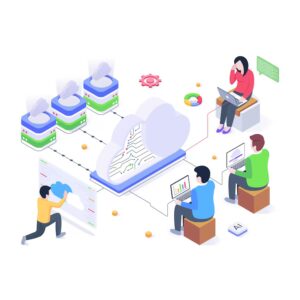Home Case Study Collaborative and Configurable: Curate Supports Healthcare Company in Building a Dynamic Consumer Data Application
Healthcare
Collaborative and Configurable: Curate Supports Healthcare Company in Building a Dynamic Consumer Data Application

How to consolidate a deluge of consumer engagement data
- Collate NPS data based on outreach campaigns
- Track trends and leading indicators
- Be easily accessible for a myriad of internal teams

The Challenge: So much data, so little causal analysis
- How can we build a data model that aligns virtual NPS scores with demographics and assesses the potential impact of consumer engagement based on the company’s outreach campaigns?
- How can we make this accessible to multiple business units and internal initiatives?
- How can we ensure it’s flexible and accessible enough for different stakeholders across the company?
The Solution: Building the right model (to build the right tool)
- User discovery and team building
- High-level planning horizon (with coordinated tools)
- Common design mission and vision
- Training for outcomes
1. Meet and build the team
2. High level planning horizon
3. Common design mission and vision
- Connect all the design dots
- Make small suggestions to ensure compliance with existing design elements
- Stay on top of accessibility
4. Training for outcomes
The Results: Adapting for better analysis and consumer outreach
- A rollout to super users yielded positive feedback.
- A presentation to senior leadership echoed that positive feedback, and reinforced the application was strong enough to scale right away.
- Several new business units will be onboarded in the next quarter, with a focus on additional initiatives to further improve and enhance the NPS tool overall.
Product highlights: a more predictive NPS tool
User Group 1: Consumer experience leaders
- Who they are – These senior leaders are managing large teams responsible for overarching plans, such as Medicare.
- How the new tool helps – They can quickly respond to an event or trend by using the self-service tool to guide teams and commercial plans on how to adapt and better engage in outreach.
User Group 2: Focused business unit stakeholders
- Who they are – These managers are directly engaging with specific outreach initiatives that require demographic and behavioral consumer data.
- How the new tool helps – They can regularly access data to historically model what the impact of ongoing programs has been, then extrapolate what it would be if the program was repeated, altered, or changed altogether.
Highly collaborative, highly configurable project models
All Case Studies
View recent studies below or our entire library of work

Strengthening Data Governance and Security for a Technology Firm
TECHNOLOGY & SOFTWARE Strengthening Data Governance and Security for a Technology Firm Focus Areas Data Governance Frameworks Cloud Security Architecture Identity and Access Management (IAM)

Enhancing Model Deployment Efficiency with DevOps and Automation
TECHNOLOGY & SOFTWARE Enhancing Model Deployment Efficiency with DevOps and Automation Focus Areas Model Deployment Automation Operational Efficiency Infrastructure as Code (IaC) Business Problem A

Enhancing Kubernetes Cluster Monitoring with Custom Visualization Tools
Technology & Software Enhancing Kubernetes Cluster Monitoring with Custom Visualization Tools Focus Areas Kubernetes Monitoring Custom Dashboards Observability and Alerting Business Problem A rapidly growing

Optimizing Infrastructure with DevOps and Automation for a Technology Firm
TECHNOLOGY & SOFTWARE Optimizing Infrastructure with DevOps and Automation for a Technology Firm Focus Areas Infrastructure as Code (IaC) DevOps Enablement Automation Strategy Business Problem